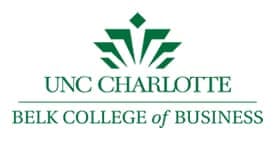Economist delivers mid-year update, state’s economic expansion continues

The North Carolina economy continues to grow with positive indicators including housing prices and the Consumer Confidence Index, UNC Charlotte professor and economist John Connaughton said at a Mid-Year Economic Update Tuesday, June 5. He stated the country is now in the second-longest economic expansion since 1854. This economic expansion has been underway for 108 months, as of early June 2018.
“Over the course of 2017, the North Carolina economy experienced a volatile economic growth pattern,” said Connaughton. “The U.S. pattern of GDP growth was quite a bit different. During the first quarter, U.S. GDP grew by a sluggish 1.2 percent, but during the second through fourth quarters, U.S. GDP averaged over 3 percent growth. Overall, during this recovery/expansion, the North Carolina GSP has grown at a slower pace than the U.S. GDP. Since 2010, the U.S. GDP growth has averaged 2.2 percent, while the North Carolina GSP growth has managed only a 1.6 percent rate of growth.”
Connaughton added, “The good news going forward is that Consumer Confidence Index still remains high despite the political stalemate in Washington. In April, the index reached 128.7 – the highest level since 2000. What remains to be seen is the longer-term impact of the corporate and personal income tax cuts enacted at the end of 2017.”
Housing prices are on the rise in Charlotte; Connaughton reported that prices have increased during the past year by 6.4 percent.
Projections for 2018 are up for the state over the last quarter, Connaughton said. In 2018, Gross State Product (GSP) is expected to reach a level of $564,271.0 million. Real (inflation-adjusted) GSP is expected to increase by 2.7 percent over the 2017 level.
The state is expected to gain 113,000 net jobs in 2018. Twelve of the state’s 14 nonagricultural sectors of the economy are expected to experience employment increases during 2018. The sectors with the strongest expected employment increases in 2018 are construction at 7.6 percent, information at 4.5 percent and hospitality and leisure services at 4.2 percent.
The unemployment rate is low nationally and only slightly higher in North Carolina. The United States started 2018 with an unemployment rate of 4.1 percent, which has declined to 3.9 percent by April. North Carolina started the year with a 4.5 percent rate of unemployment, which declined to 4.4 percent by April. By December 2018, the North Carolina unemployment rate is expected to remain around 4.2 percent.
The outlook for 2019 appears to be continued slow growth. Gross State Product (GSP) is expected to reach a level of 589,725.1 million in 2019. Real (inflation adjusted) GSP is expected to increase by 2.8 percent over the 2018 level.
“This growth in 2019 would follow 2.7 percent growth in 2018 and result in 10 years of modest, but sustained economic growth for the North Carolina economy,” Connaughton said; the economist presented his quarterly forecast as part of the Mid-Year Economic Update, sponsored by Barings.